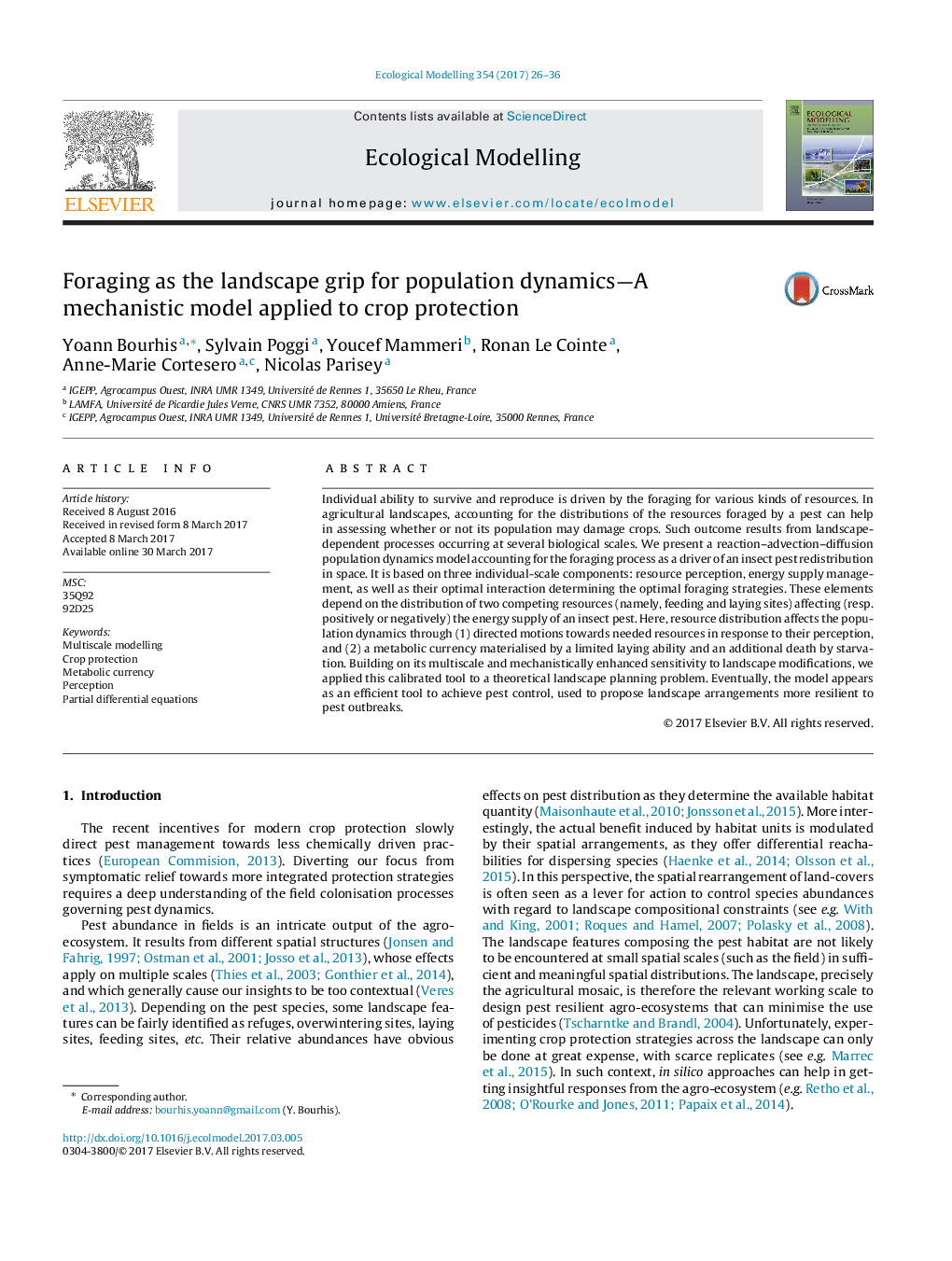| Article ID | Journal | Published Year | Pages | File Type |
|---|---|---|---|---|
| 5742184 | Ecological Modelling | 2017 | 11 Pages |
â¢We developed a pest population dynamics model with an augmented landscape dependence.â¢Here, individual foraging for competing resources drives the pest movements.â¢Foraging is based on resource perception, energy budget and optimality.â¢It links the population dynamics and the landscape via resource distribution.â¢This mechanistic link allowed investigations for resilient agricultural landscapes.
Individual ability to survive and reproduce is driven by the foraging for various kinds of resources. In agricultural landscapes, accounting for the distributions of the resources foraged by a pest can help in assessing whether or not its population may damage crops. Such outcome results from landscape-dependent processes occurring at several biological scales. We present a reaction-advection-diffusion population dynamics model accounting for the foraging process as a driver of an insect pest redistribution in space. It is based on three individual-scale components: resource perception, energy supply management, as well as their optimal interaction determining the optimal foraging strategies. These elements depend on the distribution of two competing resources (namely, feeding and laying sites) affecting (resp. positively or negatively) the energy supply of an insect pest. Here, resource distribution affects the population dynamics through (1) directed motions towards needed resources in response to their perception, and (2) a metabolic currency materialised by a limited laying ability and an additional death by starvation. Building on its multiscale and mechanistically enhanced sensitivity to landscape modifications, we applied this calibrated tool to a theoretical landscape planning problem. Eventually, the model appears as an efficient tool to achieve pest control, used to propose landscape arrangements more resilient to pest outbreaks.
